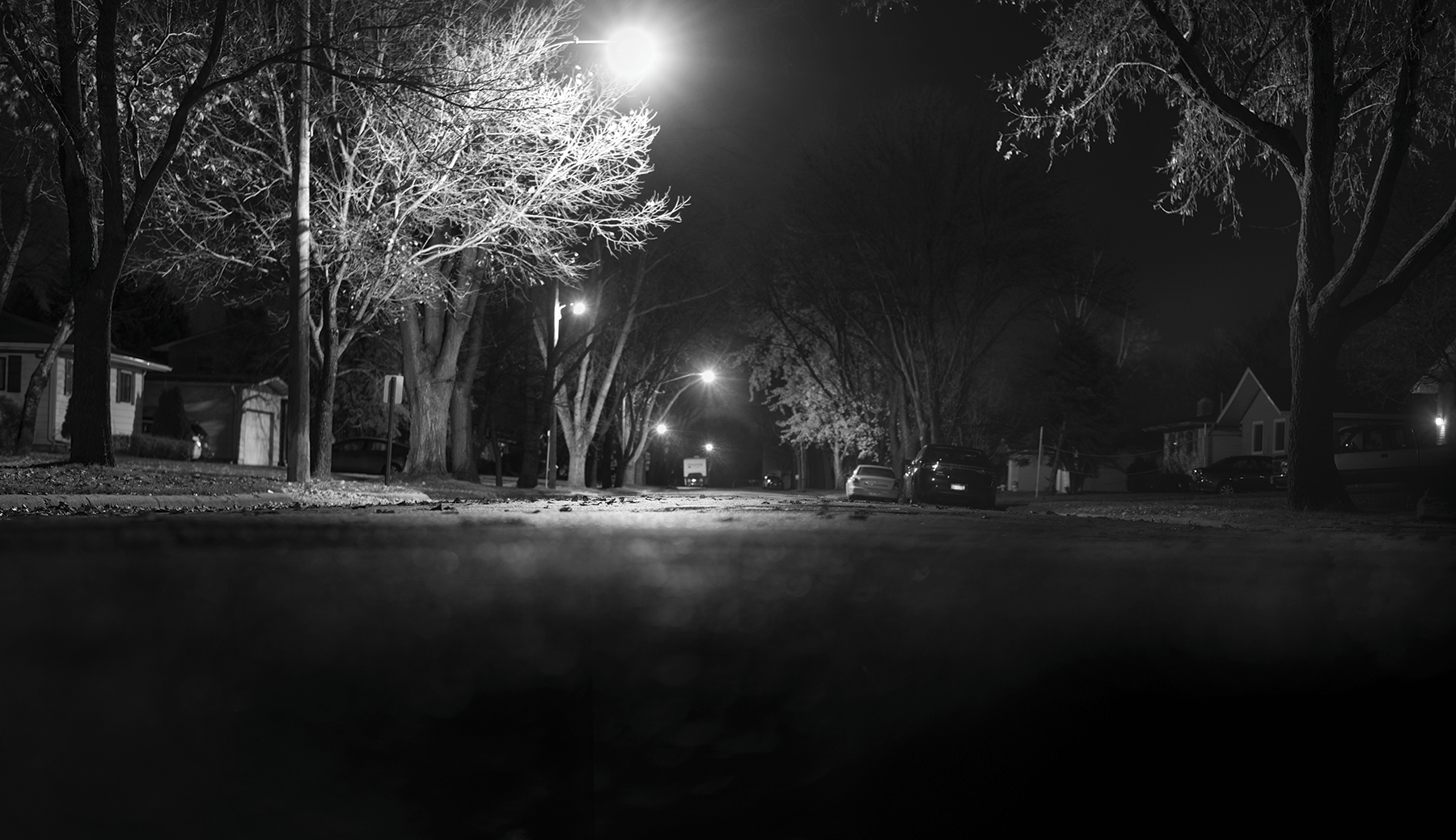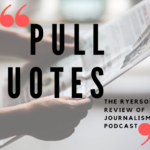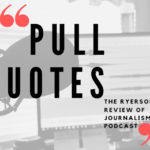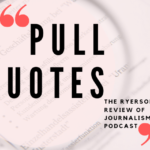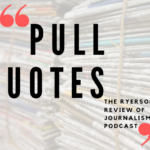How the growing trend of collaboration across newsrooms brings with it many benefits and the opportunity to blaze new journalistic trails

[su_dropcap style=”simple” size=”10″]I[/su_dropcap]n 2002, Peter Klein was producing a segment for CBS News’ 60 Minutes when he found himself in a new situation. The investigation he was working on followed Larry Ford, a gynecologist who hired a hitman to kill his business partner. Ford died by suicide after learning that police suspected him of masterminding the shooting that killed his colleague. Police also found evidence that Ford threatened or intended to infect his mostly female patients with germs and chemicals. Evidence confirmed that Ford had military connections and that he had worked with South Africa’s apartheid-era biowarfare program, meaning he effectively helped the South African government develop chemical and biological weapons. The episode, titled “‘Dr. Death’ and His Accomplice” aired that November—but the same story would also appear under a different title in another outlet.
While researching for this piece, Klein realized that Jo Thomas, a journalist at The New York Times, was reporting on the same story. Klein says he and Thomas started out as rivals, trying to beat one another to the details of the case, but eventually, they realized their competition might be getting in the way of painting a fuller picture.
“She had a lot of information on the U.S. side of the story and I had a lot of information on the South Africa side of the story and we kept running into each other,” Klein said in an interview last fall. “We realized we can either try to kill each other to publication or—‘You have things I need and I have things that you need and they’ll take a year to get that, so why don’t we just collaborate?’”
Klein’s partnership with Thomas is an example of what he’d call an “organic” collaboration, which he says occurs when “two or more journalists kind of stumble into each other and realize it’s better if we pool our efforts and our resources then try to compete.” The day the CBS episode aired, Thomas’ piece was published in The Times, ending with the following note: “A television segment based partly on the reporting in this article will be broadcast on 60 Minutes tonight on CBS.”
Of course, the partnership had its challenges, especially since this was the first collaboration 60 Minutes had ever done with The Times.
While competition is still one of the things that drives the journalism industry, especially in the fields of breaking news and investigative reporting, reporters and newsrooms are realizing that chasing these stories on their own may no longer be the best strategy. This is especially salient at a time when newsroom staff and resources are rapidly dwindling. For nearly 20 years, alliances like Klein and Thomas’ have demonstrated that collaboration between newsrooms is possible—and can reshape how we do journalism.
[su_dropcap style=”simple” size=”10″]I[/su_dropcap]n earlier days, newsrooms saw the occasional spurt of collaborative work. As reporting became a distinct occupation in the 19th century, publishers found ways to cooperate that made newsgathering easier. This includes the Associated Press, which started off as a pony express route in 1846, funded by five New York City dailies who wanted to share resources and costs while covering the Mexican-American war. Today, the Associated Press has developed into an independent, not-for-profit news cooperative with a global network of journalists in over 250 locations worldwide.
Cooperative newsgathering continued into the 20th century despite reporters competing for sources and fresh angles, and publishers competing for audiences and advertising revenue. According to an article in the International Journal of Communication, this cooperation was evident in beat reporting. This is because journalists covering the same government agency or campaign had long relied on strategic mechanisms and formal arrangements, like pool reports, to share resources and deal with competition. In other words, reporters who were rivals depended on one another even though they rarely acknowledged this in print; outwardly, news outlets continued to promote mostly their own work.
[su_quote]We realized we can either try to kill each other to publication or—‘You have things I need and I have things that you need and they’ll take a year to get that, so why don’t we just collaborate?’ [/su_quote]
Investigative reporting also benefited from collaboration, although journalism remained competitive, with newsrooms continuing the cutthroat race for the best scoop or the most interesting story. For many years, in-depth reporting relied on newspapers financing the cost of investigations while maintaining state and national news bureaus. In the second half of the 20th century, “print media became one of the most profitable businesses in the developed world,” according to Robert Picard as quoted in a Nieman Lab article. This was largely thanks to advertising, which raked in about 80 percent of newspaper revenue, while readers paid the remaining 20 percent. This revenue model only worked for as long as daily news outlets’ competition was limited to television and radio, which co-existed with newspapers; newspapers even included television and radio schedules in their pages, knowing that this would attract more readers. This would change as the Internet began to offer news updates for free: the rise of digital publishing led to the decline of print advertising and drastically reduced newsroom budgets.
On the other hand, the rise of the Internet also offered new potential ways of collaborating. In a 2018 article in the Columbia Journalism Review, Carlos Martínez de la Serna, then a research fellow at the Tow Center for Digital Journalism at Columbia University, writes that the Internet allowed for the culture, tools, and cooperative modes of production that set the groundwork for collaborative journalism. These tools included The Whole Earth ‘Lectronic Link, an internet community founded in 1985 that includes message-board discussions on a wide variety of topics. Hyperlinks, a novelty at the time, helped layer and connect information across various sites.
The Internet not only allowed journalists across newsrooms to establish connections, it also allowed citizens to get more involved with the news they consumed. The Independent Media Center, for instance, was established in 1999 in Seattle in order to organize coverage of the protests against the World Trade Organization. It continues to operate as an open-publishing platform which allows anyone with internet access to upload content.
Given these tools and technological developments, the early days of the Internet showed great promise for collaborative journalism. But this doesn’t mean the shift from opponents to partners happened overnight. It took time for journalists to shed their competitive nature as a new media ecosystem involving both traditional and new ways of producing journalism emerged. By the end of the aughts “cooperation with the competition,” finally became more common—and increasingly, more dynamic, says Martínez de la Serna.
[su_dropcap style=”simple” size=”10″]I[/su_dropcap]n the most wide-reaching journalistic collaboration in history, the 2016 investigation of the Panama Papers, brought together reporters from more than 100 media partners across the globe to reveal how the rich avoid taxes and hide their financial activities. This investigation came to be after Süddeutsche Zeitung, a German newspaper, received records from an anonymous source about Mossack Fonseca, the world’s fourth biggest offshore law firm. The records show the myriad ways that the rich exploited offshore tax regimes. Not only do the documents reveal which companies and individuals participated in this scam, but they also show financial spreadsheets, emails, and images of contracts. Realizing this was the biggest leak in history, the newspaper shared these files with the International Consortium of Investigative Journalists (ICIJ), which then shared the files with a group of international partners and shepherded the collaboration.
In April 2019, the ICIJ reported that the Panama Papers project helped recover more than $1.2 billion around the world. Its findings led to hundreds of separate investigations into undisclosed wealth across many countries including Canada, Belgium, and the United Kingdom. As a result of the investigation, some of those implicated in the reporting were later charged in the U.S. with fraud and tax evasion. In Canada, nearly 900 people and corporations have been identified in the papers, leading to 116 audits by Canada’s Revenue Agency. In addition, lawmakers in Europe agreed to create a subcommittee to help investigate financial crimes detailed in the investigations.
“I don’t think the collective impact of Panama Papers in terms of arrests, monies recovered, and just as importantly, legal reforms, would have been possible without the global buzz around Panama Papers that came from collaboration,” says Will Fitzgibbon, reporter and coordinator of partnerships in Africa and the Middle East at the ICIJ. “My experience at ICIJ tells me that investigative reporting can have a much stronger impact and further reach into corners of the world that you don’t even expect when journalists work together.”
This initial undertaking, which Fitzgibbon says involved over 370 journalists from nearly 80 countries and is still ongoing, is an example of what Klein calls a “gigantic” collaboration. “You have this huge data set of offshore bank accounts in Panama. What are you going to do with that? You alone as a journalist, it’s just way too big for you to be able to handle that,” says Klein. “So what they’ve done is they’ve brought these investigative journalists all over the world together to collaborate. And they’ve done this radical sharing model where they have a secure server, where all the data is.” In other words, reporters from different newsrooms were able to share tips and resources to create more expansive and intensive journalism for their own publications.
ProPublica is a newsroom that has been working on investigative projects that require the efforts of other local or national newsrooms for nearly a decade. In November 2019, it partnered with reporters at Portland Monthly on a story about sexual misconduct allegations against Gordon Sondland, the former U.S. ambassador to the European Union. According to Rachel Glickhouse, a partner manager at ProPublica, working together has become a financial necessity for some organizations.
“Newsroom budgets are shrinking, staff numbers are shrinking so I think there is more pressure to actually use this kind of approach because of the realities of the industry,” she says.
This was the case for Portland Monthly.
“[ProPublica] had more reporters that they could put on it and all of those people hours add up and the resources and research available,” says Fiona McCann, senior editor-at-large at Portland Monthly. McCann also noted that the first reason they reached out to ProPublica was because ethically, they felt they needed someone to independently report the elements of the story that involved a Portland Monthly employer. With three of her reporters working on the investigation, McCann says the in-depth, published story was possible because of the collaboration with ProPublica, which provided both journalists and other resources. Portland Monthly’s budget (and reach) could not have been stretched beyond the investment of its three salaried reporters.
For many newsrooms, additional fees can make it much more difficult to complete a project. In 2018, 21 newsrooms in Texas decided to pool their money and split the cost of a public records request. They were looking for the Texas voter registration database and voting history, which, according to the Center for Cooperative Media’s Medium page, costs $3,500 for “tens of millions of records.” After splitting the cost of the records 21 ways, the figure came to about $180 per participant. This meant that each newsroom was able to produce election stories that were well rounded and provided significant historical context on election coverage for their readers at a reasonable cost. For most newsrooms in the U.S., accessing these records would not have been possible otherwise. An informal survey done by a data editor at the Houston Chronicle found that out of 18 newsrooms he spoke with, seven said that a bill between $100 and $300 would be too pricey in the eyes of their editors. Five newsrooms said that a bill between $300 and $500 would be unaffordable.
Social media platforms such as YouTube, Facebook, and Twitter continue to pull advertising and subscriber revenue away from print news. These and other factors have led to newsroom buyouts, closures, and a crisis in local news. The Local News Map powered by the Local News Research Project, which combines content analysis and digital mapping to explore issues related to local news, found that 251 news outlets have closed since 2008. With budgets and the number of journalists cut, newsrooms may not have as much money to fund investigations, however journalists’ creative collaborations have aided the financial challenges.
Working together allows newsrooms to produce stories that are richer in content as they share skills, strengths, and resources that they may not have individually.
“We saved money and got a great project,” says Klein of his 60 Minutes collaboration with The Times. “We won a bunch of awards. Why would we not keep doing this?”
[su_dropcap style=”simple” size=”10″]R[/su_dropcap]obert Cribb, an investigative and foreign affairs reporter at the Toronto Star, uses collaboration to take the work that his students do at Ryerson University’s School of Journalism to a more professional level. He facilitates student collaborations through his investigative reporting course and establishes mentorships among students and reporters.
“This all came out of struggling with trying to figure out how to take this great work that we were doing in class,” says Cribb. “Every year we would amass a tremendous amount of knowledge, documents, and data about whatever it was we were looking at, but because of the structures and limitations and it’s only a one term course, you know you can’t execute a full investigation in the context of the course.”
Cribb’s national investigative reporting project was supported by the Michener-Deacon Fellowship for Journalism Education, which he won in 2015. In 2016, this fellowship was awarded to Patti Sonntag, a former managing editor in the news services division of The Times, and currently the director of the Institute for Investigative Journalism at Concordia University. It was through this award that Sonntag learned about Cribb’s work. The two teamed up shortly after and launched “The Price of Oil,” a series of stories on the hidden costs of Canada’s oil industry published in the National Observer, Global News, and the Star, in partnership with four journalism schools.
“It’s part of [the students’] learning experience,” says Sonntag. “I try to make sure that every team’s work contributes in some way to a larger work so everybody is going to get some really awesome credit.”
Jacquee Petchel is the executive editor of the Carnegie-Knight News21 Initiative at Arizona State University, an investigative reporting program which brings together the top journalism students in the U.S. to produce multimedia projects on a national scale. Their latest project, “State of Emergency,” looked into the response of federal and local agencies in communities hit with natural disasters.
“The most important thing they learn [at News21] is how to work in a team in which decisions and ideas are openly discussed and don’t belong to any one person,” Petchel says. “I think an important lesson going forward in the future is that students, and all journalists, need to have a new plan for how we imagine journalism and that plan has to be working across what used to be very competitive lines.”
These student examples describe Klein’s last collaborative model. “There’s that kind of middle ground where you bring a few people together…where you’re strategic and say, ‘Okay, we’re looking at a particular issue,’ ” says Klein. “We want to bring a few different news organizations that are going to offer different things to this project.” Klein has experience with this collaborative model through his work at the Global Reporting Centre, which he founded in 2016. The centre works towards innovating global journalism. Its staff works with other journalists or media organizations to produce long-form multimedia projects. The centre also works with academics who are experts on the chosen topics.
[su_quote cite=”Robert Cribb”]I was always the lone wolf type, so for me, it’s taken time to figure out how to do this because I’m just used to doing everything the way I like to do it [/su_quote]
“It definitely brings a valuable level of rigor to the journalism having academics there,” he says. “Academics who spend their lives studying an issue, they know it back and forth.”
[su_dropcap style=”simple” size=”10″]I[/su_dropcap]n 2013, one of the many investigations Robert Cribb was involved in for the Star won a Beyond Borders ECPAT Canada Media Award for its exemplary reporting. The investigation, for which Cribb and two other reporters teamed up with reporters from the El Nuevo Herald, the Spanish-language sister publication of the Miami Herald, was called “The Ugly Canadians: Child Sex Tourism.” It investigated sex tourists in Cuba, focusing on Canadians who travel to Cuba and pay for sexual relations with child prostitutes as well as why children are partaking in this trade. When Cribb talks about the project, he makes sure to give credit where credit is due.
“I teamed up with the Miami Herald’s Spanish-language sister publication because they had expertise in Cuba and they had people who spoke the language and understood the culture and I said, I didn’t,” says Cribb, recognizing how collaborative journalism can aid the issue of sending an outsider to report on local matters.
But Cribb’s model doesn’t apply everywhere. The Independent Barents Observer, which is based in northern Norway, focuses heavily on the border regions between northernmost Norway, Finland, Sweden, and Russia, and from time to time participates in joint media projects with partners in the same four countries. The publication is also bilingual—it is published online in English and Russian, and is piloting a Chinese-language option-“in order to reach out to readers across the borders,” according to Thomas Nilsen, the site’s editor. However, a law in Russia is currently hindering their ability to collaborate with any Russian citizen, journalist or otherwise.
According to observations on the law in Russia published in The Independent Barents Observer, “any Russian citizen who receives money from abroad and then publish[es] a text, photos or a video, can now fear being victims of the infamous ‘foreign agent’ law.” In other words, Russia is allowed to declare journalists and bloggers as “foreign agents,” which means that The Independent Barents Observer is currently blocked on all mobile phones in Russia by the government censorship agency, and as an editor, Nilsen is denied entry to the country. His case is one example of how collaborative journalism may be restricted to newsrooms from places with similar freedoms.
For now, Nilsen has found a way to work around this. He said that while he can hire Russian freelance journalists, it would not be a smart thing to do because they would be at such a high risk of getting into trouble with the authorities on account of Russia’s media laws. “Instead, we do have some barter-agreements [with] Russian media: they can publish our articles, we can publish their[s] (without any money involved).”
Issues can also arise when news organizations have different ethical standards, especially ones from different parts of the world. According to Klein, this is not uncommon. “Journalists will accept bribes from politicians. That’s kind of the way that works in some places. So you have to establish a set of ground rules.” For example, different media organizations may have different standards. “For television, some places are perfectly fine to say, ‘Can you pretend to do some work at your desk? I want to film some B-roll of you,’ ” says Klein. “To others, that could be a fireable offense. That’s directing and faking.”
When it comes to working relationships, Canada’s National Observer reporter Emma McIntosh, who participated in the “Price of Oil” series, points to the danger in viewing oneself as the star reporter—especially when it comes to collaborations across newsrooms.
“The egos can’t get in the way,” she says. “If everyone is really there because they think the story has to get told, it doesn’t matter whose name is first on the byline, it doesn’t matter if publication is delayed by a week.”
For Cribb, this can be particularly difficult for journalists who have always worked “singularly.”
“I was always the lone wolf type, so for me, it’s taken time to figure out how to do this because I’m just used to doing everything the way I like to do it,” he says. “You definitely need to be more consultative, share credit, you need to be gracious.” Cribb compares collaboration to a marriage: a harmonious union requires compromise, putting aside one’s own viewpoints and interests, and ultimately knowing that the glory is not all yours.


